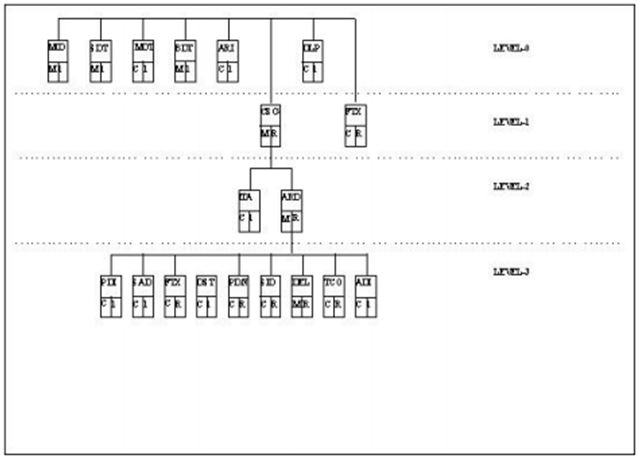Message Hierarchy
This diagram shows each of the segments that can make up a DELINS message, from the MID segment at the beginning to the FTX segment at the end. Note that the segments UNB, UNH, UNT and UNZ from the beginning and end of the sample DELINS message are not present in the hierarchy diagram. This is because they are "service segments", which must occur with all message types, and so are not normally included in a message hierarchy diagram.
Example of Message Hierarchy –

A segment that is above another segment in the hierarchy is known as a parent segment. A segment that is below another segment in the hierarchy is known as a child segment The name of a segment usually gives an indication of its contents, so MID means Message Information Details, SDT means Seller Details and ARD means Article Details for example.
Standards other than Odette will use different names for their segments and will structure their messages differently, but the principles are the same for any standard.
Any repeatable segment that has other segments below it in the hierarchy may not be repeated until the mandatory segments below it have been used. Any non-repeatable segment can be used again in the message, but only once its parent has been used again. So, in the sample message above, the DST segment can be used once after each ARD segment.